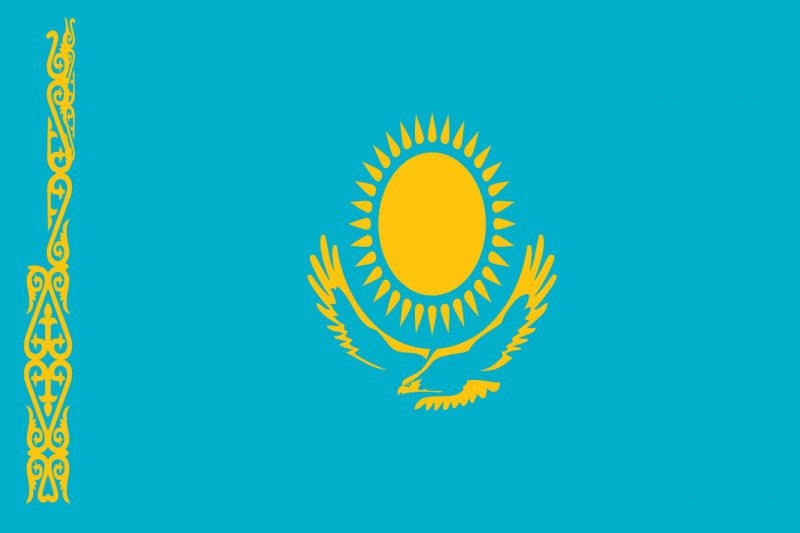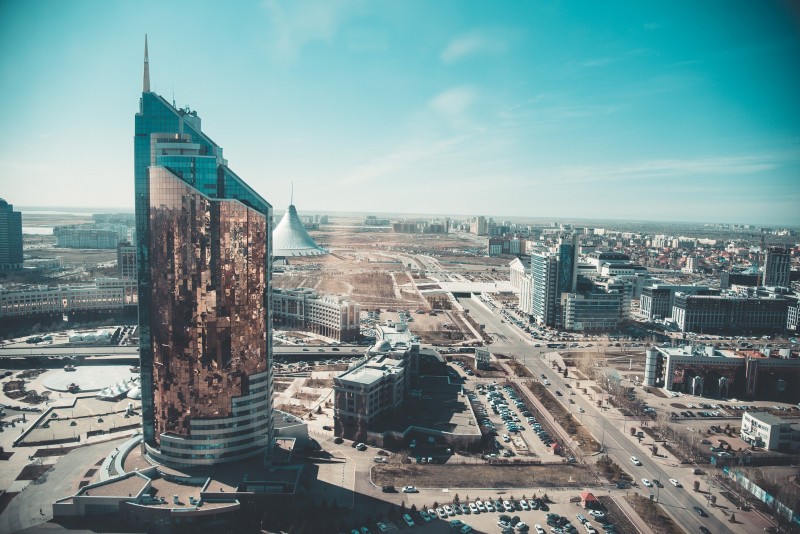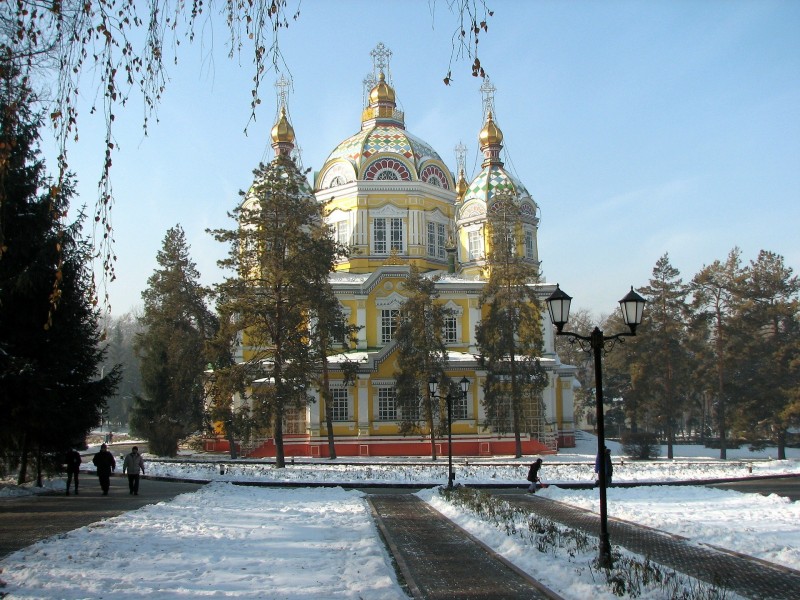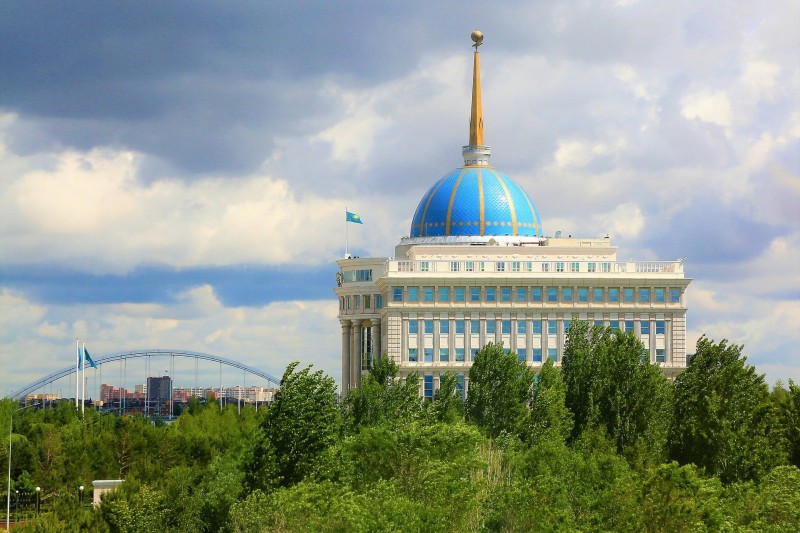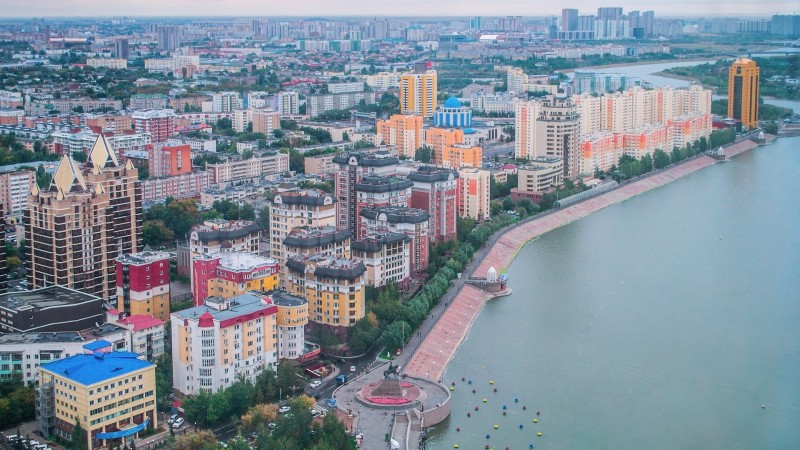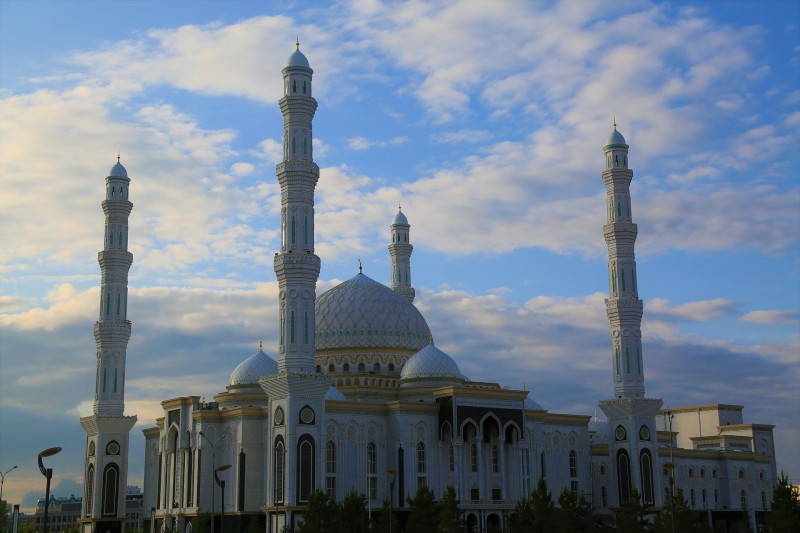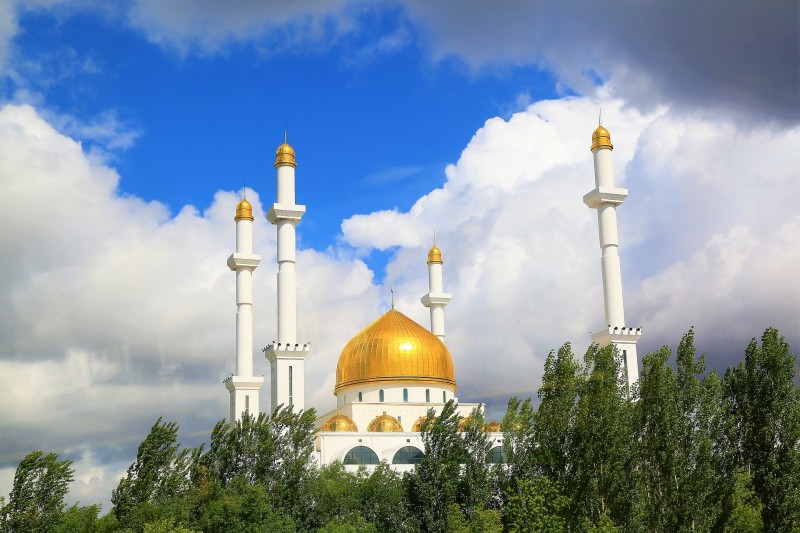Kazakhstan
Kazakhstan
Capital city description
Formerly Astana- Nur-Sultan is the capital city of Kazakhstan; Nur-Sultan is located in the center of Kazakhstan in the dry steppe zone, a subzone of dry tipchak-feather grass steppe. Presently, the capital territory exceeds 722 square kilometers; the population is more than 1 million people.
The city consists of four districts - "Almaty," "Saryarka," "Esil," and "Baikonur." The advantageous location in the center of the Eurasian continent makes the capital of Kazakhstan an economically beneficial transport, communication and logistics center, a kind of a transit bridge between Europe and Asia.
Climate
The climate in Kazakhstan is highly scorching in summer, with temperatures rising to 40 ° C during the day, very severe winters, and snowy, violent oranges during the warm season with floods locally.
- Spring: March to May
- Summer: June to August
- Autumn: September to November
- Winter: December to February
Languages spoken
In Kazakhstan, the spoken language is Kazakh and Russian, while the written language is Kazakh.
Fun/Fascinating Facts
1. Ancient Kazakhs were the first people in the world to domesticate and ride horses.
2. Kazakhstan is a landlocked country in Central Asia. Landlocked countries are surrounded by land and do not have access to the open sea.
3. Kazakhs deem that whistling a song inside a building will make you poor for the rest of your life.
4. The Caspian Sea is the world’s largest inland body of water with 386,400 sq km; it is larger than the area of Japan.
5. The first satellite sent into space, Sputnik 1, was made in this country. This satellite was sent into space from a space station, Baikonur Cosmodrome, located in present-day Kazakhstan.
Unique Customs/Traditions
- Kazakhs are generally modest and hospitable. They respect the elderly; younger generations value their elders, who often live with their children or grandchildren.
- Customarily in Kazakhs, before eating, the host will firstly bring water, kettle, and washbasin for the guest to wash their hands, and then serve the plate with sheep head, rear leg, and rib meat in front of the guest.
- The Konaqkade is a tradition associated with the reception of guests. At the end of the meal, the host can ask the guest to offer a song or play a musical instrument. In return, the guest usually performs improvisation, in which he thanks the hosts for a warm welcome.
- The specially invited akyn (folk improvising poet and singer) sings traditional Kazakh wedding songs, contests, dances, and funny competitions during the wedding. After the wedding, the newlyweds go to the wedding tent.
- Children are the most important treasure for the Kazakh family, so their growth and upbringing are associated with numerous rituals and traditions. One of these is either lying in the cradle, naming, and, of course, one of the essential customs for a child — Tusau Kesu, or cutting the ties. This ceremony is held when the child starts taking his first steps.
Popular universities
| Name | Description | |
|---|---|---|
| Al-Farabi Kazakh National University | Al-Farabi Kazakh National University is a non-profit public higher education institution located in the urban setting of the metropolis of Almaty. Founded in 1934 and officially recognized by the Ministry of Education and Science of the Republic of Kazakhstan. Al-Farabi Kazakh National University (KNU) offers courses and programs leading to officially recognized higher education degrees such as bachelor's degrees in several areas of study. Al-Farabi Kazakh National University (KNU) also provides academic and non-academic facilities and services to students, including a library and administrative services. | |
| Founded in 1996, L.N. Gumilyov Eurasian National University is a non-profit public higher education institution located in the urban setting of the large city of Nur-Sultan. Established in 1996 and officially recognized by the Ministry of Education and Science of the Republic of Kazakhstan. L.N. Gumilyov Eurasian National University (ENU) offers courses and programs leading to officially recognized higher education degrees such as bachelor's degrees, master's degrees, doctorate degrees in several areas of study. International applicants are eligible to apply for enrollment. L.N. Gumilyov Eurasian National University also provides academic and non-academic facilities and services to students, including a library, housing, sports facilities, financial aids and scholarships, study abroad and exchange programs, and administrative services. | ||
| Nazarbayev University | Nazarbayev University is a non-profit public higher education institution located in the urban setting of the large city of Nur-Sultan. Founded in 2010 and officially recognized by the Ministry of Education and Science of the Republic of Kazakhstan. Nazarbayev University (NU) offers courses and programs leading to officially recognized higher education degrees in several areas of study. NU also provides several academic and non-academic facilities and services to students, including a library, housing, sports facilities, financial aids and scholarships, study abroad and exchange programs, as well as administrative services. International students are welcome to apply for enrollment. | |
| Karaganda State Technical University | Karaganda State Technical University is a non-profit public higher education institution located in the urban setting of the large city of Karaganda, Karaganda Region. Founded in 1953 and officially recognized by the Ministry of Education and Science of the Republic of Kazakhstan, Karaganda State Technical University (KarSTU) offers courses and programs leading to officially recognized higher education degrees such as pre-bachelor degrees (i.e., certificates, diplomas, associate or foundation), bachelor's degrees, master's degrees, doctorate degrees in several areas of study. KarSTU also provides several academic and non-academic facilities and services to students, including a library, sports facilities, study abroad and exchange programs, online courses, and distance learning opportunities, as well as administrative services. International students are welcome to apply for enrollment. | |
| Kazakh National Medical University | Established in 1930, Kazakh National Medical University is a non-profit public higher education institution located in the rural setting of the metropolis of Almaty, officially recognized by the Ministry of Education and Science of the Republic of Kazakhstan. Kazakh National Medical University (KazNMU) offers courses and programs leading to officially recognized higher education degrees such as bachelor's degrees, master's degrees, doctorate degrees in several areas of study. International applicants are eligible to apply for enrollment. KazNMU also provides academic and non-academic facilities and services to students, including a library, housing, sports facilities, financial aids and scholarships, study abroad and exchange programs, online courses, and distance learning opportunities as administrative services. | |
| Kazakh National Medical University | Kazakh National Medical University is a non-profit public higher education institution located in the rural setting of the metropolis of Almaty. Established in 1930 and officially recognized by the Ministry of Education and Science of the Republic of Kazakhstan. Kazakh National Medical University (KazNMU) offers courses and programs leading to officially recognized higher education degrees such as bachelor's degrees, master's degrees, doctorate degrees in several areas of study. KazNMU also provides academic and non-academic facilities and services to students, including a library, housing, sports facilities, financial aids and scholarships, study abroad and exchange programs, online courses, and distance learning opportunities as administrative services. International applicants are eligible to apply for enrollment. | |
| Satbayev University | Satbayev University is a non-profit public higher education institution located in the urban setting of the metropolis of Almaty (population range of 1,000,000-5,000,000 inhabitants), founded in 1933, officially recognized by the Ministry of Education and Science of the Republic of Kazakhstan. Satbayev University offers courses and programs leading to officially recognized higher education degrees such as bachelor's degrees in several areas of study. Satbayev University also provides several academic and non-academic facilities and services to students, including a library, sports facilities, study abroad and exchange programs, and administrative services. | |
| Karaganda State University | Karaganda State University is a non-profit public higher education institution located in the large city of Karaganda, Karaganda Region. Founded in 1972 and officially recognized by the Ministry of Education and Science of the Republic of Kazakhstan. Karaganda State University (KarSU) offers courses and programs leading to officially recognized higher education degrees such as bachelor's degrees in several areas of study. Karaganda State University (KarSU) also provides academic and non-academic facilities and services to students, including a library, sports facilities, study abroad and exchange programs, and administrative services. | |
| KIMEP University | KIMEP University is a non-profit private higher education institution located in the urban setting of the metropolis of Almaty. Founded in 1992 and officially recognized by the Ministry of Education and Science of the Republic of Kazakhstan. KIMEP University (KIMEP) offers courses and programs leading to officially recognized higher education degrees such as bachelor's degrees, master's degrees, doctorate degrees in several areas of study. International students are welcome to apply for enrollment. KIMEP also provides several academic and non-academic facilities and services to students, including a library, housing, sports facilities, financial aids and scholarships, study abroad and exchange programs, online courses, and distance learning opportunities as administrative services. | |
| S. Toraighyrov Pavlodar State University | Founded in 1960, S. Toraighyrov Pavlodar State University is a non-profit public higher education institution located in Pavlodar, Pavlodar Region and officially recognized by the Ministry of Education and Science of the Republic of Kazakhstan. S. Toraighyrov Pavlodar State University (ToU) offers courses and programs leading to officially acknowledged higher education degrees such as pre-bachelor degrees (i.e., certificates, diplomas, associate or foundation), bachelor degrees, master degrees, doctorate degrees in several areas of study. International students are welcome to apply for enrollment. S. Toraighyrov Pavlodar State University (ToU) also provides academic and non-academic facilities and services to students, including a library, housing, sports facilities, financial aids and scholarships, study abroad, and exchange programs, online courses and distance learning opportunities, and administrative services. | |
Festivals & Events
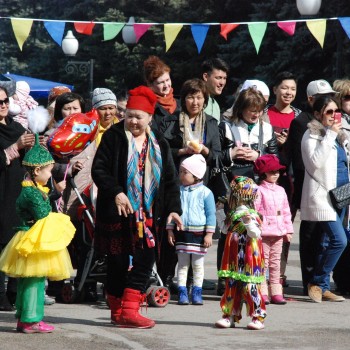
Nauryz
Date: March 21-22
In Kazakhstan, Nauryz held on the arrival of spring on March 21st, a holiday that welcomes the spring equinox and the renewal of nature. Nauryz is not considered a religious holiday in Kazakhstan -it was celebrated before the arrival of Islam. It is a remnant of ancient pagan cultic traditions that honored the forces of nature.
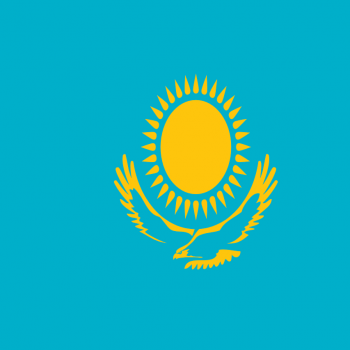
Constitution Day
Date: August 30th
The constitution day honors the establishment of the Constitution of the Kazakhstan Republic, which occurred in 1995. 30th August is the day which is regarded as the constitution day of Kazakhstan and is a national holiday. Road celebrations, marches, and fireworks can be enchanted on this day.

Four E
Date: August
Four E ethnic ecological festival is observed in the mid of August where “E” indicates four words – ecology, ethnicity, emotions, and evolution. These four principles are precious for the spiritual development of any human. The decorating of tents and the whole territory with bright materials are specially designed to reflect four colors related to the festival’s concept: green stands for ecology, purple is for evolution, pink represents emotions, and orange signifies ethnicity.
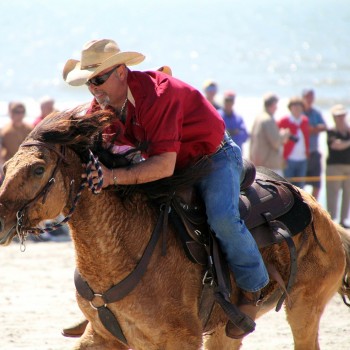
Chabana Festival
Date: August
The Chabana Festival, also known as Cowboy Festival, is a shared festival with the Kyrgyz people held near the Kazakh-Kyrgyz border in August. The Chabana Festival, or Cowboy Festival, brings together local herders to participate in sports and recreation.
One of the most popular and most deeply rooted in Kazakhstan's history is "Chasing after the Bride," in which women are given a head start on horseback and pursued by men, also on horseback, in an attempt to catch them.
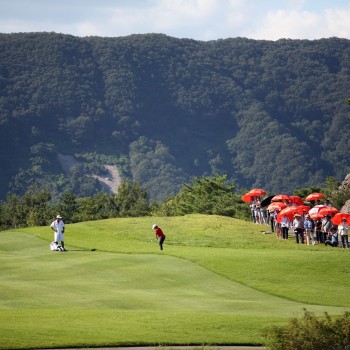
Kazakhstan Golf Open
Date: September
The annual Kazakhstan Golf Open takes place every year in September. Held in Almaty, the Open is a men's pro tournament that draws the most prominent names from around the globe. Making up one portion of the annual "Challenge Tour," the Kazakhstan leg offers golfers the highest monetary prize of all regions and is thus profoundly competitive.

Astana International Contest of Kazakh Song
Date: September
Astana International Contest of Kazakh Song is a tribute to Kazakh music held annually in September. Overseas performers from all over Poland, Uzbekistan, and Germany compete in singing Kazakh songs in their native languages. A festival is an enormous event in Astana, with local choirs and children’s groups being called upon to accompany many contestants.
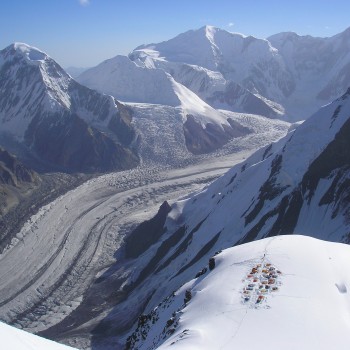
Khan Tengri Mountain Festival
Date: September
The Khan Tengri Mountain festival is an exhausting yet exciting climbing event held every year in August. For more than 500 participants from around the world try to reach the Khan Tengri Peak over 20 days. The event attracts big names as athletes Cimono Moro and Alexander Lvov.
Attractions / Top Sights
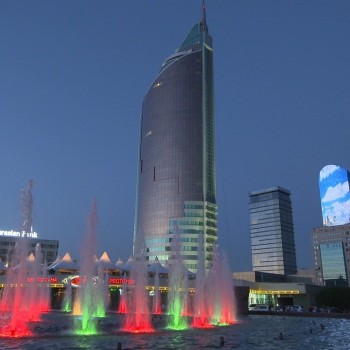
Almaty
When to visit: In summer
Almaty city is the biggest city in Kazakhstan, containing ethical and cultural diversity. It is the densest and developed city in Kazakhstan, situated in southeast Kazakhstan in a beautiful setting between mountains and plains. The hills are covered with snowflakes.
The charming places in the city are the Beatles Statue of Almaty, Big Almaty Lake, Charyn Canyon, The Last Wild Apple Forests, Kok-Tobe Hill, Kolsai Lakes, Almaty Central Park, Lake Issyk, and Central State Museum of Kazakhstan.
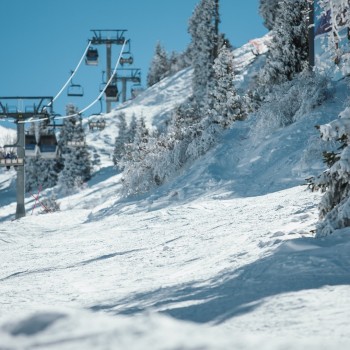
Shymbulak
When to visit: November to March
Shymbulak, also called Chimbulak, is a skiing resort, about 25 kilometers south of Almaty city by the Medeo road. It is accessible by cable car, which takes off from a place in Medeo Valley.
The desirable natural conditions attract tourists to lay 900-1000 meters tracks. In addition, travelers can go mountain climbing and hiking which offers some breathtaking views of Alpine routes.
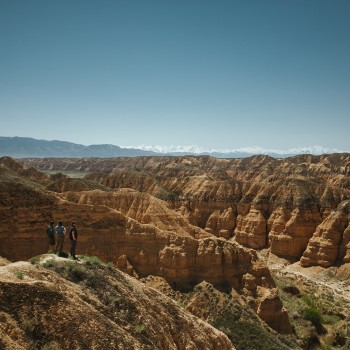
Charyn Canyon
When to visit: In Spring (April – June) and Autumn (September- October)
Charyn Canyon, a 154km-Canyon, is the second-largest Canyon in the world found on the Charyn River, Charyn. It is also famous as the "little brother of the Grand Canyon." A part of the Canyon is covered with unique rock formations known as the Valley of Castles.

Astana
When to visit: May to September
Astana, one of the great capital cities of Kazakhstan, stands as the living example of the modernized nation and presents popular Kazakhstan tourist attractions. Amidst plenty of corporate business centers and multi-story buildings around, the architecture of this city will mesmerize the visitors, making it a brilliant location for Kazakhstan sightseeing.
Discover the luxurious panoramic view of Astana city from the top of the 105-meter tall Bayterek Tower or visit Duman Recreational Complex, which is the ultimate pit-stop for all art lovers.
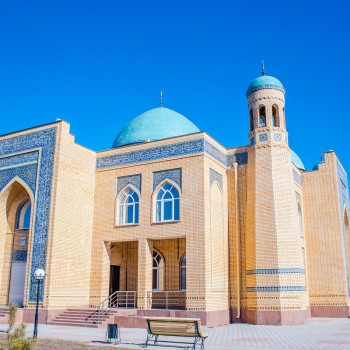
Central Mosque of Almaty
When to visit: May to September
One of the most enormous and most magnificent mosques is known as the Central Mosque of Almaty. This blue turquoise dome mosque has become the central building of Islam in Almaty.
The Central Mosque is built with the style of Central Asian Mosques and has five graceful minarets, all with blue domes. The famous Green Bazaar and Almaty's Arbat are located near it. Non-Muslim visitors are also welcome to enter the mosque.
.jpg)
Palace of Peace and Reconciliation
When to visit: May to September
The Palace of Peace and Reconciliation, a beautiful glass-and-steel pyramid designed by Norman Foster, also known as the Pyramid of Peace and Accord, is a 62-meter-high pyramid in Nur-Sultan, the capital of Kazakhstan, that serves as a non-denominational national spiritual center and an event venue. Full of symmetry and symbolism, the pyramid is splendidly furnished and a highlight of the city.
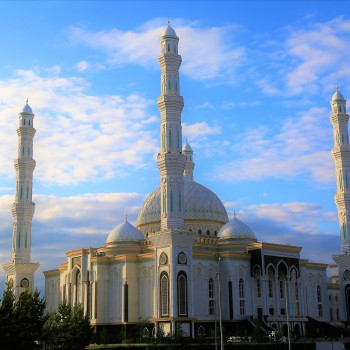
Hazrat Sultan Cathedral Mosque
When to visit: May to September
One of the most artistic attractions of Astana is the Hazrat Sultan Cathedral Mosque, which is located in the Kazakh city of Turkestan.“Hazrat Sultan” is translated as “Apostolic Sultan.” The mosque was named in tribute to one of the Sufi sheiks – Khoja Ahmed Yassawi (the XII century), a poet, philosopher, and Muslin saint, well-known in the territory of whole Central Asia.
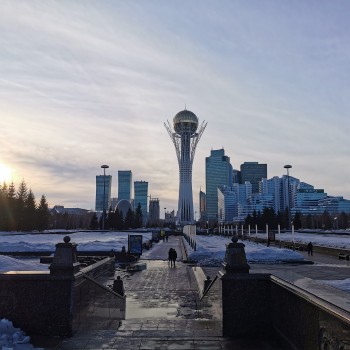
Baiterek Tower
When to visit: May to September
When to visit: https://www.kazconsulate.com/en/about-kazakhstan/baiterek-tower
Baiterek Tower is a monument and observation tower in Astana, the capital city of Kazakhstan, designed by well-known English architect Norman Foster, built-in 1997, a symbol of transferring the capital from Almaty to Astana.
It is pretty famous among foreign tourists in Astana, Bayterek tower, which embodies a folktale; it is about a mythical tree of life and a magic bird of happiness.
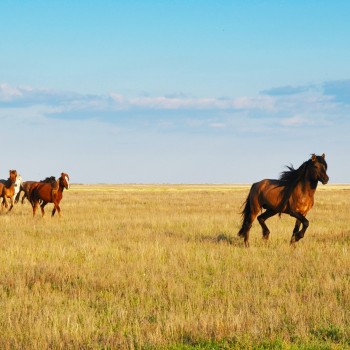
Saryarka
When to visit: May to September
When to visit: https://whc.unesco.org/en/list/1102
Saryarka is a Natural World Heritage Site in Kazakhstan. Saryarka - Steppe and Lakes of Northern Kazakhstan is a part of the Kazakh Uplands, designated a world heritage site by UNESCO. It was inscribed on July 7, 2008, the only natural site listed as a UNESCO world heritage site in Kazakhstan.
The property’s wetland areas are essential for migratory waterbirds, including substantial populations of globally threatened species, as they are key stopover points and crossroads on the Central Asian flyways.















